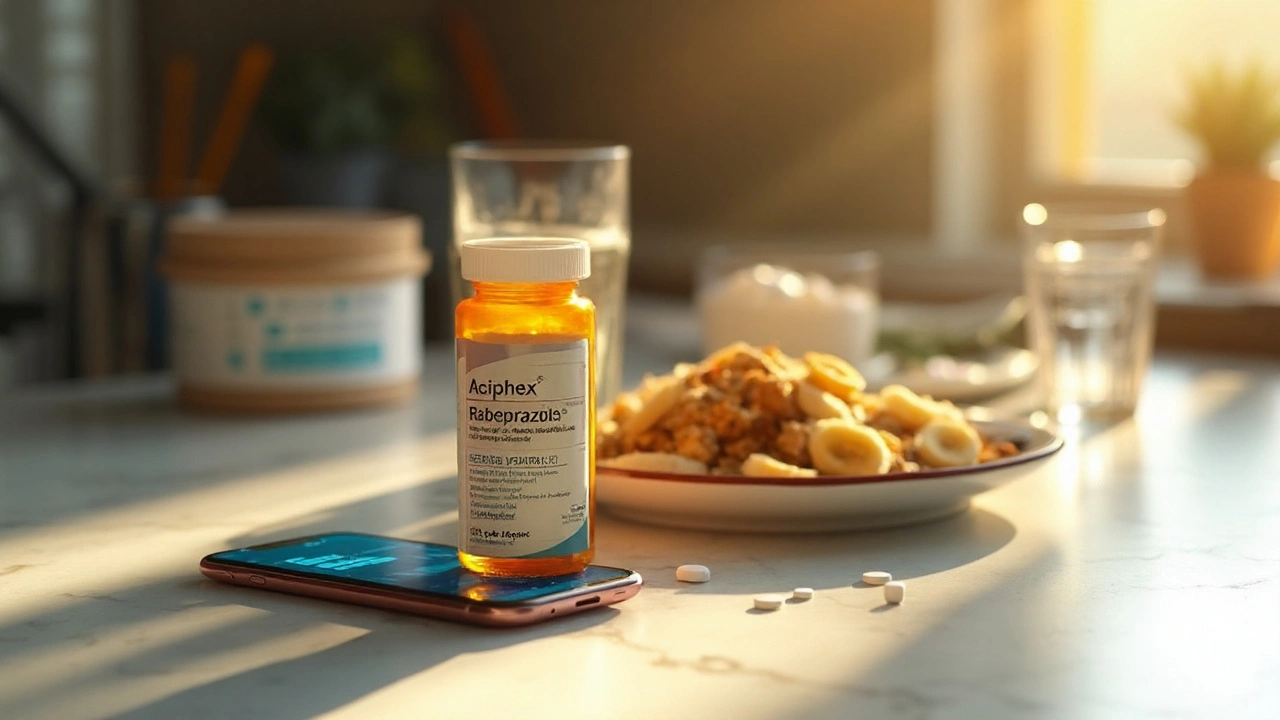Aciphex (Esomeprazole) – What It Is and When to Use It
Aciphex is the brand name for esomeprazole, a proton‑pump inhibitor that lowers stomach acid. Doctors usually prescribe it for acid reflux, GERD, stomach ulcers, and certain types of esophagitis. If you’ve been told you have heartburn that won’t quit or you’re dealing with a confirmed ulcer, Aciphex might be on the list. It works by blocking the enzyme that makes acid, so you get relief without the need to constantly chew antacids.
Most people start with a 20 mg or 40 mg tablet once daily, taken before breakfast. The exact dose depends on how severe your symptoms are and what condition you’re treating. For mild GERD, a 20 mg dose often does the trick, while more stubborn ulcers might need 40 mg. Your doctor may ask you to keep taking it for 4‑8 weeks, then re‑evaluate.
How to Take Aciphex Correctly
Swallow the tablet whole with a glass of water. Don’t crush or chew it – the coating protects the drug until it reaches your stomach. Try to take it at the same time every day; consistency helps maintain steady acid control.
If you miss a dose, take it as soon as you remember, but only if it’s less than 12 hours late. Otherwise, just skip it and resume your regular schedule. Doubling up can cause stomach upset or more side effects, so avoid that.
Aciphex can be taken with or without food, but many find it easier on their stomach when taken before a meal. If you’re on a long‑term schedule, your doctor may suggest a “step‑down” plan: a lower dose after symptoms improve, to keep acid under control while minimizing exposure.
Side Effects, Interactions, and Safety Tips
Common side effects include headache, mild stomach pain, nausea, and gas. Most of these disappear after a few days. Rarely, you might notice dizziness, vision changes, or severe diarrhea. If any of those pop up, call your healthcare provider.
Aciphex can interact with a few other drugs. It may lower the effectiveness of certain antivirals (like atazanavir) and some heart medicines (like clopidogrel). Always list every prescription and over‑the‑counter product you take when you get a new prescription. The pharmacist can flag any red‑flags.
People with liver disease should use Aciphex cautiously, as the drug is processed in the liver. If you have a history of bone fractures, long‑term use (over a year) might increase your risk, so discuss bone‑health monitoring with your doctor.
Pregnant or breastfeeding moms should only use Aciphex if the benefit clearly outweighs the risk. The data isn’t robust, so a doctor’s guidance is essential.
When you finish a course, don’t just stop if you still have symptoms. Talk to your doctor – they might extend the treatment or suggest a different medication. Stopping too early can let acid bounce back, which defeats the purpose.
In case you’re buying Aciphex online, make sure the pharmacy is licensed, requires a prescription, and displays a physical address. Counterfeit pills can be dangerous and won’t give you the relief you need.
Bottom line: Aciphex is a powerful tool for acid‑related problems, but it works best when you follow the dosing schedule, watch for side effects, and keep your doctor in the loop about any other meds you’re using. With a few simple habits, you can tame heartburn and let your stomach heal.

Aciphex (Rabeprazole) Guide 2025: Uses, Dosage, Side Effects, and Alternatives
Clear 2025 guide to Aciphex (rabeprazole): what it treats, how to take it, side effects, interactions, and alternatives-plus NZ/US cost notes and pro tips.
Sep 1 2025




